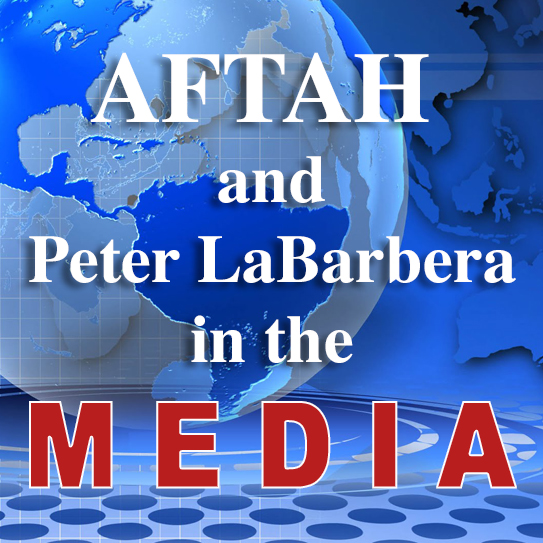
| Home | About | Issues | Resources | Join Our Email List | Savage Hate | Donate | Contact |
The Intolerance of Tolerance
Excerpted from The Intolerance of Tolerance, by Greg Koukl, published Dec 14, 2006, by Townhall:
 Probably no concept has more currency in our politically-correct culture than the notion of tolerance. Unfortunately, one of America’s noblest virtues has been so distorted it’s become a vice.
Probably no concept has more currency in our politically-correct culture than the notion of tolerance. Unfortunately, one of America’s noblest virtues has been so distorted it’s become a vice.
There’s one word that can stop you in your tracks. That word is “intolerant.”
…The modern notion of tolerance is seriously misguided.
The Tolerance Trick
As it turns out, by the modern definition of tolerance no one is tolerant, or ever can be. It’s what my friend Francis Beckwith calls the “passive-aggressive tolerance trick.” Returning to the classic understanding of tolerance is the only way to restore any useful meaning to the word. Let me give you a real life example.
Earlier this year I spoke to a class of seniors at a Christian high school in Des Moines, Iowa. I wanted to alert them to this “tolerance trick,” but I also wanted to learn how much they had already been taken in by it. I began by writing two sentences on the board. The first expressed the current understanding of tolerance:
“All views have equal merit and none should be considered better than another.”
All heads nodded in agreement. Nothing controversial here. Then I wrote the second sentence:
“Jesus is the Messiah and Judaism is wrong for rejecting Him.”
Immediately hands flew up. “You can’t say that,” a coed challenged, clearly annoyed. “That’s disrespectful. How would you like it if someone said you were wrong?”
“In fact, that happens to me all the time,” I pointed out, “including right now with you. But why should it bother me that someone thinks I’m wrong?”
“It’s intolerant,” she said, noting that the second statement violated the first statement. What she didn’t see was that the first statement also violated itself.
I pointed to the first statement and asked, “Is this a view, the idea that all views have equal merit and none should be considered better than another?” They all agreed.
Then I pointed to the second statement—the “intolerant” one—and asked the same question: “Is this a view?” They studied the sentence for a moment. Slowly my point began to dawn on them. They’d been taken in by the tolerance trick.
If all views have equal merit, then the view that Christians have a better view on Jesus than the Jews have is just as true as the idea that Jews have a better view on Jesus than the Christians do. But this is hopelessly contradictory. If the first statement is what tolerance amounts to, then no one can be tolerant because “tolerance” turns out to be gibberish.
Escaping the Trap
“Would you like to know how to get out of this dilemma?” I asked. They nodded. “You must reject this modern distortion of tolerance and return to the classic view.” Then I wrote these two principles on the board (This way of putting it comes from Peter Kreeft of Boston College.):
Be egalitarian regarding persons.
Be elitist regarding ideas.
…Tolerance applies to how we treat people we disagree with, not how we treat ideas we think false.
…Classic tolerance requires that every person be treated courteously with the freedom to express his ideas without fear of reprisal no matter what the view, not that all views have equal worth, merit, or truth.
…To argue that some views are false, immoral, or just plain silly does not violate any meaningful definition or standard of tolerance.
Note that respect is accorded to the person, here. Whether his behavior should be tolerated is an entirely different issue…
Topsy-Turvy
The modern definition of tolerance turns the classical formula for tolerance on its head:
Be egalitarian regarding ideas.
Be elitist regarding persons.
If you reject another’s ideas, you’re automatically accused of disrespecting the person (as the coed did with me). On this new view of tolerance no idea or behavior can be opposed—even if done graciously—without inviting the charge of incivility.
To say I’m intolerant of the person because I disagree with his ideas is confused. Ironically, it results in elitism regarding persons. If I think my ideas are better than another’s, I can be ill-treated as a person, publicly marginalized and verbally abused as bigoted, disrespectful, ignorant, indecent and—can you believe it—intolerant. Sometimes I can even be sued, punished by law, or forced to attend re-education programs.
Tolerance has thus gone topsy-turvy: Tolerate most beliefs, but don’t tolerate (show respect for) those who take exception with those beliefs. Contrary opinions are labeled as “imposing your view on others” and quickly silenced.
This is nonsense and should be abandoned. The myth of tolerance forces everyone into an inevitable “Catch-22,” because each person in any debate has a point of view he thinks is correct.
Catch-22
Classical tolerance involves three elements: (1) permitting or allowing (2) a conduct or point of view one disagrees with (3) while respecting the person in the process.
Notice that we can’t truly tolerate someone unless we disagree with him. This is critical. We don’t “tolerate” people who share our views. They’re on our side. There’s nothing to put up with. Tolerance is reserved for those we think are wrong, yet we still choose to treat decently and with respect.
This essential element of classical tolerance—disagreement (elitism regarding ideas)—has been completely lost in the modern distortion of the concept. Nowadays if you think someone is wrong, you’re called intolerant no matter how you treat him.
This presents a curious problem. One must first think another is wrong in order to exercise true tolerance, yet saying so brings the accusation of intolerance. It’s a “Catch-22.” According to this approach, true tolerance becomes impossible.
Intellectual Cowardice
Most of what passes for tolerance today is nothing more than intellectual cowardice, a fear of intelligent engagement. Those who brandish the word “intolerant” are unwilling to be challenged by other views or grapple with contrary opinions, or even to consider them. It’s easier to hurl an insult—”you intolerant bigot”—than to confront an idea and either refute it or be changed by it. In the modern era, “tolerance” has become intolerance.
Whenever you’re charged with intolerance, always ask for a definition. When tolerance means neutrality, that all views are equally valid and true, then no one is ever tolerant because no one is ever neutral about his own views. Point out the contradiction built into the new definition. Point out that this kind of tolerance is a myth.
Gregory Koukl is founder and president of Stand to Reason, an organization devoted to a thoughtful and engaging defense of classical Christianity in the public square. He is also a radio talk show host and author of Relativism—Feet Firmly Planted in Mid-Air.










